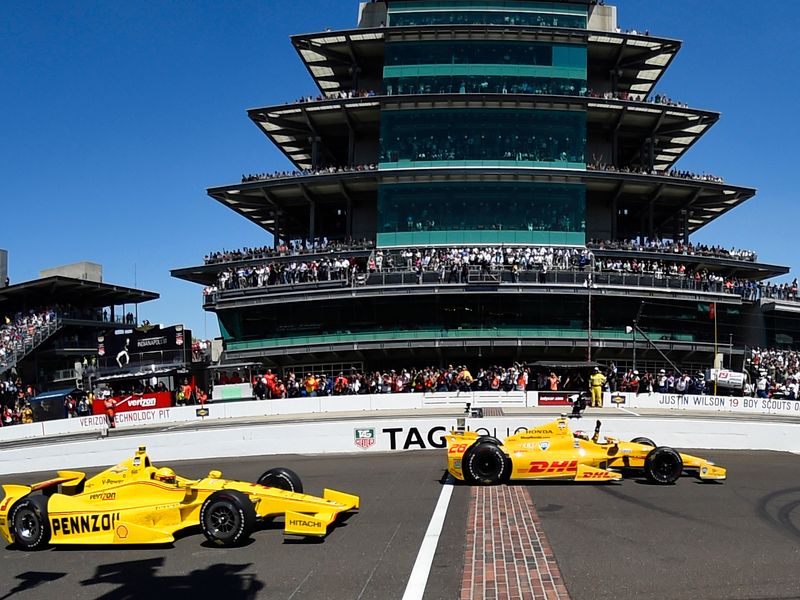
Like the early days of the auto industry, there was a lot of trial and error as motorsports took root around the world.
Mankind has always been fond of racing, whether chariots, horses, bicycles or boats. Automobile racing proved just as challenging when it came to surface, length, tire type and car type.
Even one of the most celebrated race courses in the world struggled to get it right in the early days.
On Dec. 14, 1909, workers finished installing the last of 3.2 million, 10-pound bricks that paved the 2.5-mile oval Indianapolis Motor Speedway in Speedway, Ind.
Most of the bricks have since been removed or buried under asphalt, but one yard remains exposed at the famed start-finish line. Winning drivers at the track, which has hosted NASCAR and Formula One in addition to its famous open-wheel races, often kneel and kiss the bricks as part of the speedway’s tradition.
Carl Fisher, an auto-headlight magnate, entrepreneur and motorsports promoter, decided in 1908 to build a five-mile track that would give automakers a safe place to test and show off new models and engineering advances.
Fisher, who also helped developed Miami Beach, attracted three partners and acquired 320 acres of farmland on the edge of Indianapolis, across the street from his Prest-O-Lite headlight factory.
His original plans for a “motor parkway” called for a three-mile “outer” loop and a two-mile course through the infield.
But such a long track would not fit on the property unless all the grandstands along the straightaways were removed.
Fisher and his construction superintendent, in a compromise, decided to build a 2.5-mile banked oval with grandstands on all sides.
Fisher and his contractor eschewed the concrete that other racecourse operators were adopting at the time and used a gooey blend of gravel, limestone, tar, and thousands of gallons of asphaltum oil.
When the first race was held at the track in August 1909, featuring motorcycles, the abrasive surface proved a disaster, with numerous popped tires and other collateral damaged to race teams.
On May 30 1911, after a few subsequent races at the Indianapolis Motor Speedway failed to attract large numbers of fans, Fisher staged the first 500-mile race — it was dubbed a sweepstakes — over the brick surface. The 40-car race drew more than 80,000 people that onlookers described as “the greatest spectacle in sports.”
Ray Haroun won the race with a purse of $14,250, with an average speed of 74.59 mph and a total time of 6 hours and 42 minutes.
Asphalt was used for the first time to cover the rougher parts of the track in 1936, and by 1941 most of the 2.5-mile track was paved. The last of the speedway’s original bricks were covered in 1961, except for the three-foot line of bricks exposed at the start-finish line.
The track, now owned by Roger Penske, has served as a test bed for automotive and engineering advances such as rearview mirrors and front-wheel drive.

